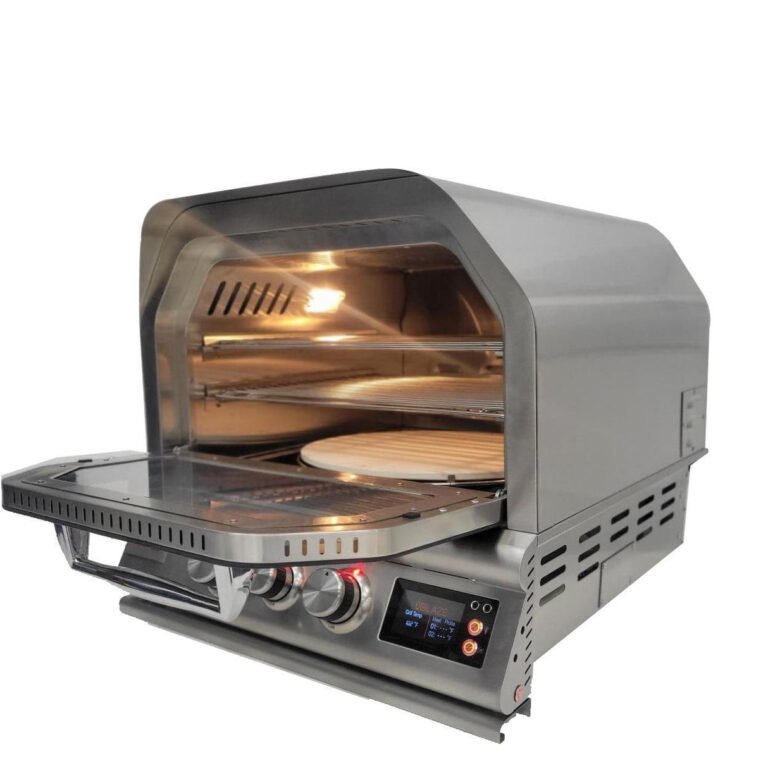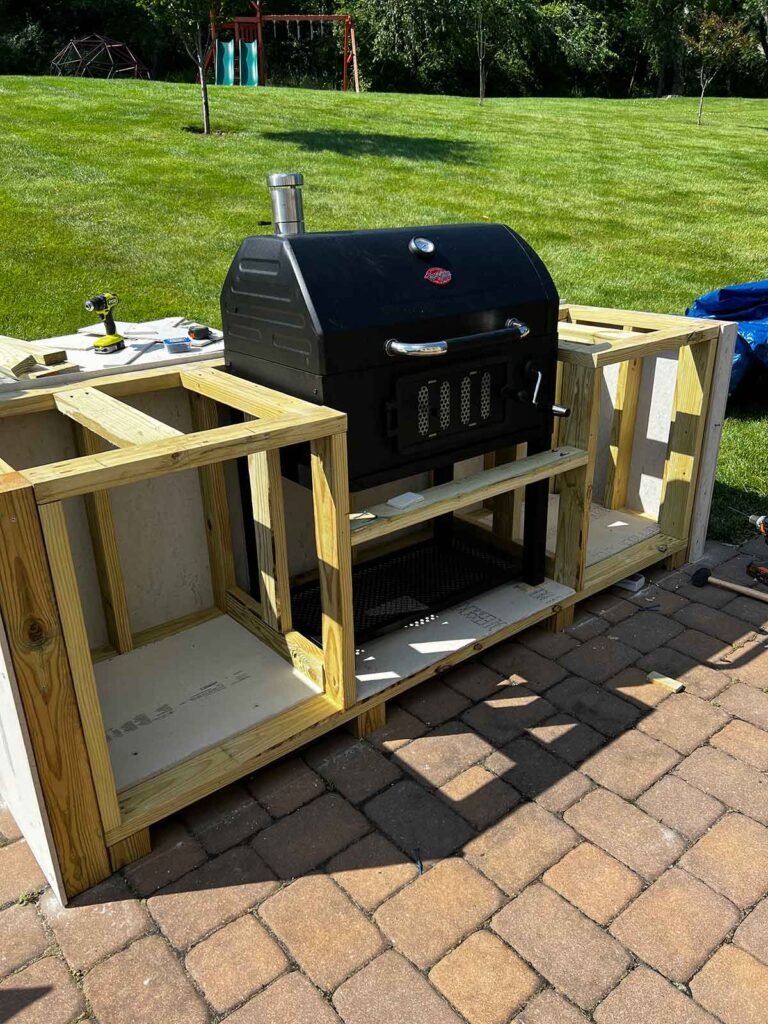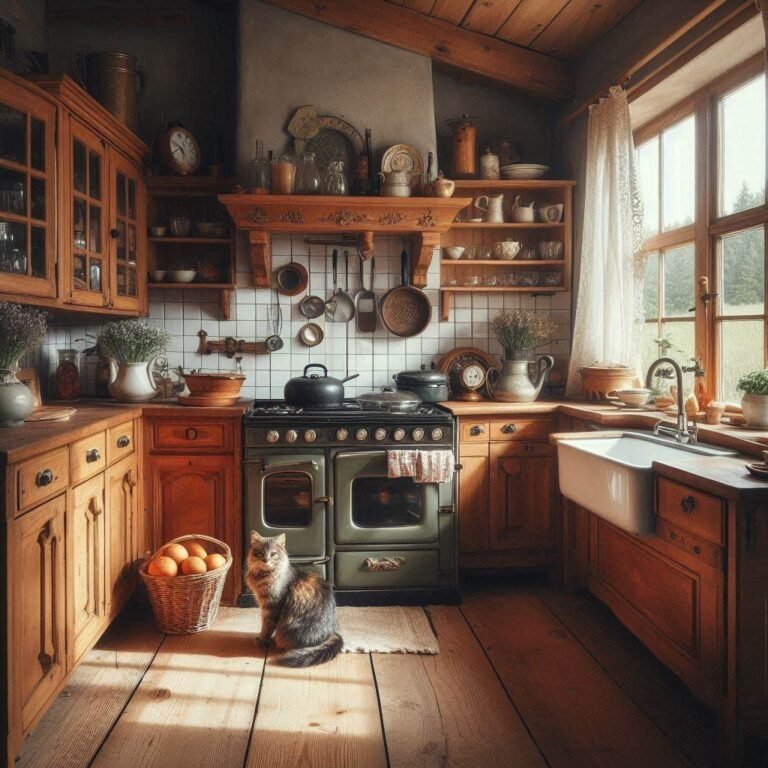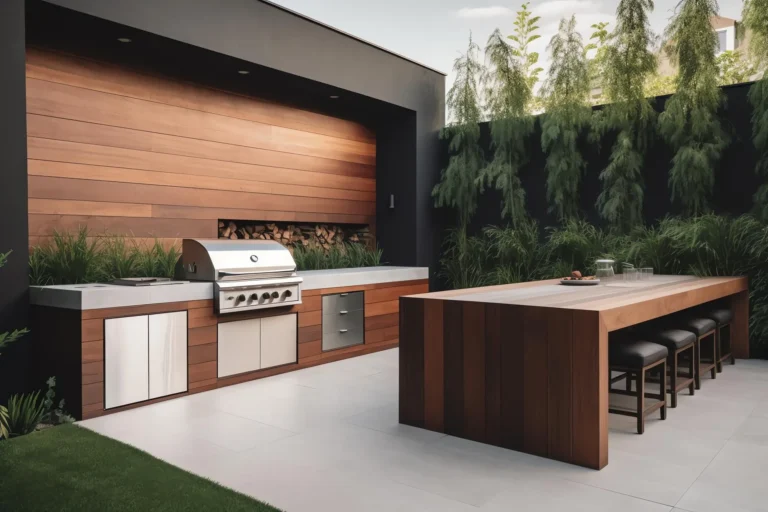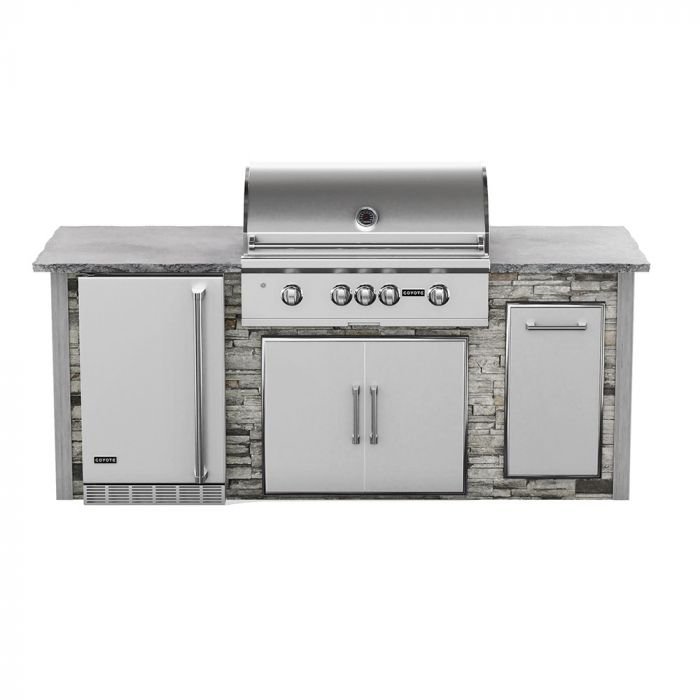Creating an outdoor kitchen can bring your backyard to life. It’s a space for cooking, socializing, and enjoying the outdoors.
Imagine preparing a meal under the open sky, surrounded by the comfort of your home but with the fresh air of the outdoors. Selecting the right materials for your DIY outdoor kitchen is crucial. They need to be durable, weather-resistant, and align with your aesthetic desires.
Your outdoor kitchen should withstand sun, rain, and temperature changes. You want materials that last and maintain their look over time. Consider this: the best materials for your DIY project are not just about strength. They also add style and function to your outdoor cooking space. From classic stone to modern stainless steel, options vary widely. Each choice offers unique benefits and challenges. Your decision will impact the kitchen’s cost, durability, and maintenance level. A thoughtfully chosen material can make your outdoor kitchen a welcoming and resilient addition to your home. Let’s explore the materials that will make your outdoor culinary space a hit for years to come.
Introduction To Diy Outdoor Kitchens
Embrace the joy of outdoor cooking with a DIY kitchen in your backyard. This project blends fun with functionality. It’s a place for family meals and social gatherings. Think fresh air and flavors while boosting your home’s value. Let’s dive into the craft of creating your own outdoor culinary space.
Why Build Your Own?
Building an outdoor kitchen is a rewarding venture. It saves money compared to pre-built options. You tailor it to fit your style and needs. Pride swells with each meal cooked in the space you created. It’s not just a kitchen; it’s your personal touch to outdoor living.
Key Considerations Before You Start
Planning is key. Measure your space and choose durable materials. Consider weather patterns, as your kitchen must withstand the elements. Think about utilities like water and electricity. Plan for easy access to your indoor kitchen. This groundwork ensures a smooth build and years of enjoyment.

Weather Resistance: The First Criterion
Weather Resistance stands as the top factor for DIY outdoor kitchens. It ensures durability against rain, sun, and wind. Choosing the right materials is vital.
Importance Of Durable Materials
Durable materials save money and time. They prevent frequent repairs. A solid build guarantees years of enjoyment. Weather-resistant materials are a must.
Examples Of Weather-resistant Options
- Stainless Steel: Fights rust, lasts long. Ideal for grills and cabinets.
- Stone: Natural look. Withstands heat and cold well.
- Concrete: Tough and versatile. Great for countertops.
- Bricks: Offers a classic appeal. Good for walls and floors.
- Teak Wood: Strong against moisture. Perfect for accents.
Choosing these materials means less worry about weather damage. Your kitchen stays strong.
Stone And Concrete: Timeless And Tough
Outdoor kitchens need durable materials. Stone and concrete stand the test of time. They resist weather and wear. These materials blend with outdoor settings. Their natural look enhances garden landscapes.
Advantages Of Stone
Stone offers beauty and strength. It comes in various colors and textures. Stone is heat resistant, making it perfect for grills and stoves. It needs little upkeep. Moss and vines on stone can create a rustic charm.
Working With Concrete
Concrete is versatile and tough. It molds into any shape and size. Concrete surfaces can mimic other materials. It’s cost-effective for large areas. Sealed concrete counters resist stains and scratches. Regular resealing keeps concrete in top shape.
Stainless Steel: Sleek And Modern
Outdoor kitchens bring life to backyards, and stainless steel stands out as a top choice. Its sleek finish offers a modern look that many homeowners love. This material isn’t just about looks; it’s also highly functional and durable. Let’s dive into what makes stainless steel a smart pick for your DIY outdoor kitchen project.
Benefits Of Stainless Steel
Stainless steel shines for several reasons. It resists rust and withstands harsh weather, making it perfect for outdoor use. This material handles heat well and doesn’t hold stains easily. It’s a strong choice for areas where food gets messy. Stainless steel also keeps its new look for years. It adds a touch of class to any outdoor cooking space.
Maintenance Tips
Caring for stainless steel is simple. Use mild soap and water for regular cleaning. Dry it with a soft cloth to prevent water spots. For tougher stains, a mix of baking soda and water works well. Remember to clean with the grain to avoid scratches. A little care keeps your kitchen shining like new.
Wood: Natural Warmth And Versatility
Wood brings natural warmth and versatility to any outdoor kitchen. Its rich texture and color add beauty to your space. Wood stands out for its ease of working and adaptability to different styles. Yet, choosing the right type and protecting it is key.
Types Of Wood Suitable For Outdoors
Different woods offer various benefits for outdoor kitchens. Let’s explore:
- Teak: Known for its durability and resistance to weather.
- Cedar: Offers a lovely scent and natural insect repellent.
- Redwood: Stands out for its beauty and longevity.
These woods cope well outdoors. They resist decay and pests.
Protecting Wood From The Elements
Wood needs protection to last outdoors. Here are simple steps:
- Sealant: Apply a waterproof sealant to block moisture.
- Stain: Use stain to add color and extra protection.
- Cover: When not in use, cover your wood surfaces.
Regular care keeps wood in top shape. Reapply sealant as needed.

Brick And Ceramic Tile: Classic Charm
Outdoor kitchens bring joy to family gatherings and backyard barbecues. Brick and ceramic tile offer timeless appeal. They transform spaces with their warmth and character. These materials are ideal for a DIY outdoor kitchen.
Why Choose Brick?
Brick stands out for its durability and maintenance ease. It withstands weather and offers a traditional look. Consider these points:
- Long-lasting: Brick is tough and stays strong for years.
- Low maintenance: It resists stains and needs little care.
- Heat resistance: Ideal for high-temperature areas near grills.
- Classic beauty: Adds a rustic charm to any outdoor space.
Ceramic Tile For Colorful Designs
Ceramic tile is a versatile option. It brings color and personality to kitchens. Its benefits include:
| Quality | Advantage |
|---|---|
| Design flexibility | Many colors and patterns available. |
| Easy to clean | Just wipe to remove spills and splashes. |
| Durable | Resists wear and tear in outdoor settings. |
| Cost-effective | Affordable for various budget ranges. |
Composite Materials: Innovation In Outdoor Kitchen Design
Outdoor kitchens transform backyards into vibrant spaces for cooking and socializing. Among the materials shaping these areas, composite stands out. This innovation offers a blend of aesthetics and functionality. Let’s explore what makes composite materials a smart choice for outdoor kitchen enthusiasts.
What Are Composite Materials?
Composite materials combine two or more distinct components. They create a new material with superior properties. For outdoor kitchens, these composites often mix plastic with wood fibers. The result is a strong, durable, and weather-resistant material. It’s ideal for the demands of outdoor cooking and entertainment.
Pros And Cons
Like all materials, composite comes with its own set of advantages and drawbacks. On the pro side, composites resist rot, pests, and weather. They need less maintenance than pure wood. This makes them cost-effective over time. They also come in various colors and textures. This gives designers freedom to create unique outdoor spaces.
On the downside, composites can be more expensive upfront than other materials. They can also get hot when exposed to direct sunlight. This is a factor to consider for outdoor kitchen surfaces. Weighing these pros and cons is key when planning your DIY outdoor kitchen project.
Countertop Choices For Outdoor Kitchens
Choosing the right countertop for an outdoor kitchen is key. It needs to withstand weather, heat, and lots of use. Let’s explore top materials.
Granite And Natural Stone
Granite is a top choice. It’s tough against weather and heat. Easy to clean, too. Natural stone options, like slate and soapstone, also work well outdoors. They offer unique looks but need more care than granite.
- Durable: Resists scratches and heat.
- Low maintenance: Just needs sealing once a year.
- Beauty: Adds elegance with many colors.
Concrete And Tile Countertops
Concrete countertops are custom. They can fit any space. Plus, you can pick colors and textures. But, they can crack over time. Use a sealer to protect them. Tile is another option. It’s less costly and offers many designs. Yet, grout lines can be hard to clean.
| Material | Pros | Cons |
|---|---|---|
| Concrete | Customizable, durable | Can crack, needs sealing |
| Tile | Cost-effective, many designs | Grout lines hard to clean |
Budget-friendly Options: Balancing Cost And Quality
Creating an outdoor kitchen need not break the bank. Quality and affordability can go hand in hand. Discover materials that are both cost-effective and durable for your DIY project.
Repurposed Materials
Using repurposed materials is a smart way to save money. Look for items like used bricks, reclaimed wood, or old countertops. These can add unique charm to your kitchen.
- Old bricks can build a rustic patio.
- Reclaimed wood works well for cabinets and tables.
- Salvaged countertops provide a sturdy surface for food prep.
Cost-effective Purchasing Strategies
Purchase smart to stay within your budget. Seek sales, buy in bulk, and consider alternative stores.
| Strategy | Benefits |
|---|---|
| Seasonal Sales | Discounted prices on outdoor materials |
| Bulk Purchases | Lower cost per unit |
| Alternative Stores | Find unique items at lower prices |
Remember to compare prices and check material quality before buying. This ensures a balance between cost and durability.

Construction Tips And Best Practices
Building an outdoor kitchen requires careful planning and the right materials. Let’s explore essential construction tips and best practices for a durable and functional outdoor cooking space.
Designing For Functionality
Functionality is key in outdoor kitchen design. Start by assessing your cooking habits. What appliances and features do you need? This will inform the layout and materials. Choose weather-resistant materials like stainless steel for appliances and stone or concrete for surfaces. These stand up to the elements and are easy to clean.
- Measure your space to ensure a good fit for all elements.
- Plan for storage and prep areas to make cooking outside as convenient as inside.
- Include ample lighting for safety and ambiance.
Safety Considerations
Safety is vital in an outdoor kitchen. Use non-combustible materials like brick or stone around grills and cooktops. Ensure your design allows for proper ventilation to prevent smoke and gas buildup.
- Install a fire extinguisher within reach for emergencies.
- Place appliances away from high traffic areas to avoid accidents.
- Use slip-resistant flooring to prevent falls in wet conditions.
Adhering to these construction tips and best practices will help create a safe, enjoyable outdoor kitchen.
Finishing Touches: Aesthetics And Accessories
Finishing Touches: Aesthetics and Accessories turn a basic outdoor kitchen into a personal retreat. The right finish and accessories can transform your space. Let’s dive into choosing the perfect aesthetics for your outdoor kitchen.
Choosing The Right Finish
Your outdoor kitchen’s finish is vital. It should handle weather and look great. Consider these options:
- Stone Veneer: Adds a rustic charm.
- Stainless Steel: Offers a modern, sleek look.
- Tile: Comes in many colors and patterns.
- Brick: Gives a classic, timeless feel.
Accessorizing Your Outdoor Kitchen
Accessories make your kitchen unique. Think about these:
- Grill Tools: Essential for cooking.
- Lighting: For evening gatherings, choose LED or solar.
- Storage: Keep utensils and spices in reach.
- Seating: Comfortable chairs invite guests to relax.
Maintenance And Upkeep
Maintaining a DIY outdoor kitchen extends its life and keeps it looking great. Proper care involves routine tasks to protect your investment. It’s not just about cleaning; it’s about knowing the right steps to take through every season. Let’s dive into what you need to do.
Regular Cleaning
Keep your outdoor kitchen in top shape with frequent cleaning. Wipe surfaces after each use. Use mild soap and water for most materials. Brush grates on grills right after cooking. This stops food and grease build-up. For stainless steel, use a specific cleaner to avoid stains and rust.
Winterizing Your Outdoor Kitchen
Before winter arrives, prepare your outdoor kitchen. Turn off water lines to prevent pipes from freezing. Cover appliances with weatherproof covers. Empty and clean the fridge and storage areas. This prevents mold and damage from cold temperatures.
Real-life Examples And Inspirational Projects
Outdoor kitchens transform backyards into lively gathering spots. Real-life DIY projects show just how creative you can get with the right materials. Let’s dive into some inspiring examples and success stories.
Case Studies
Take John and Sarah’s rustic retreat. They used reclaimed wood for a warm, natural feel. Their stone countertop is not just durable, it also blends perfectly with the garden. They shared pictures online, sparking ideas for many.
Diy Success Stories
Emma turned a tiny patio into a culinary haven. She chose stainless steel for its sleek look and weather resistance. Her blog post about the build details every step, encouraging others to try.
Conclusion: Bringing It All Together
As we wrap up our discussion on DIY outdoor kitchens, let’s revisit the material choices. These selections set the stage for a functional, stylish space. Now, we’ll summarize our findings and offer final insights on constructing your outdoor kitchen.
Recap Of Material Choices
Stainless steel, stone, and concrete emerged as top contenders for durability and aesthetics. Wood added a natural touch, while tile offered endless design possibilities. Each material brings unique benefits:
- Stainless Steel: Rust-resistant and easy to clean.
- Stone: Natural look and weatherproof.
- Concrete: Custom shapes and industrial flair.
- Wood: Warmth and classic charm.
- Tile: Colorful patterns and easy maintenance.
Final Thoughts On Building Your Outdoor Kitchen
Embarking on a DIY outdoor kitchen project is exciting. The right materials make all the difference. Choose based on climate, maintenance, and style. Remember, quality materials lead to a lasting kitchen. Enjoy crafting a space that suits your home and lifestyle.
Frequently Asked Questions
What Are Durable Materials For Outdoor Kitchens?
Outdoor kitchens benefit from durable materials like stainless steel, stone, and concrete. Stainless steel resists corrosion and is easy to clean, while stone and concrete withstand harsh weather and provide a natural aesthetic.
Can I Use Wood In My Diy Outdoor Kitchen?
Yes, you can use wood for your DIY outdoor kitchen, particularly teak or cedar, which are more resistant to the elements. However, they require regular maintenance to prevent decay and should be treated for additional protection.
What Countertop Is Best For Outdoor Use?
Granite is the best countertop for outdoor use due to its durability against the elements. It withstands high temperatures, resists stains and is easy to maintain, making it ideal for outdoor kitchen spaces.
Is Brick A Good Choice For Outdoor Kitchens?
Brick is an excellent choice for outdoor kitchens. It offers a classic look, retains heat for cooking, and is sturdy enough to withstand outdoor conditions. However, it may require sealing to prevent moisture absorption.
Conclusion
Choosing the right materials for your DIY outdoor kitchen matters. Go for durability and style with stainless steel or sturdiness with concrete. Stone offers a natural touch, while wood brings warmth, but remember upkeep. Your outdoor kitchen can be the perfect place for gatherings with the best materials.
Start building your dream space today and make those backyard barbecues unforgettable. Your friends and family will love the fresh air and home-cooked meals. Get creative, pick your materials, and enjoy the crafting journey. Happy building!


